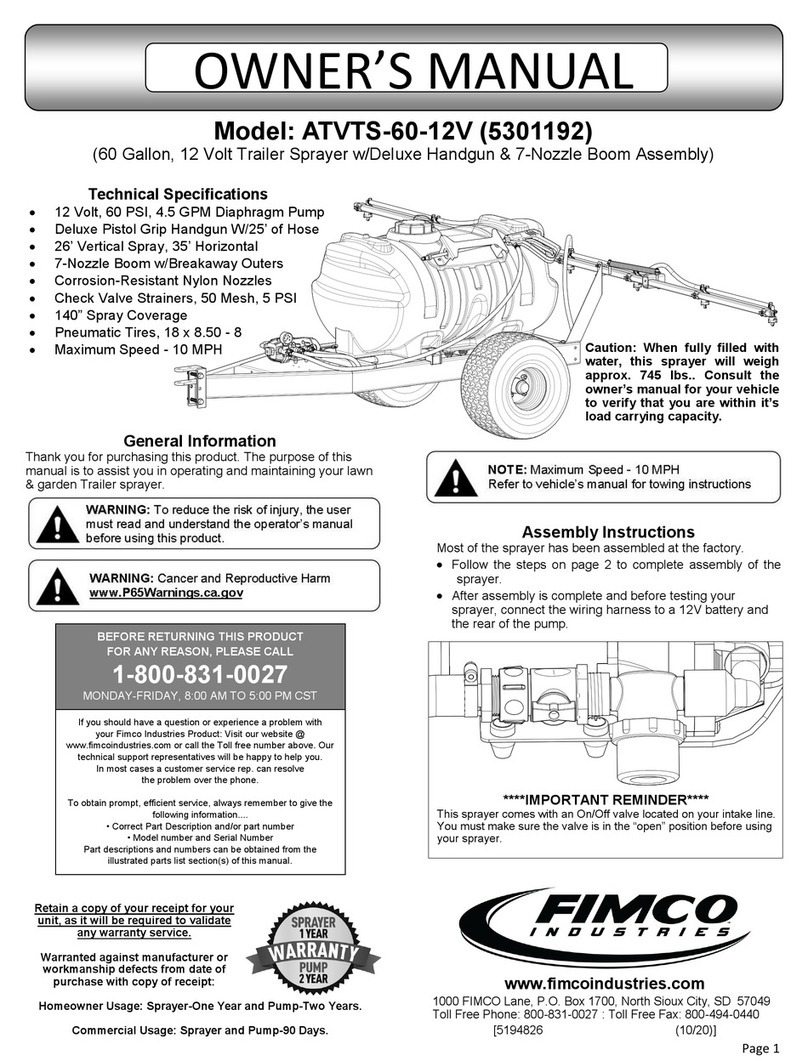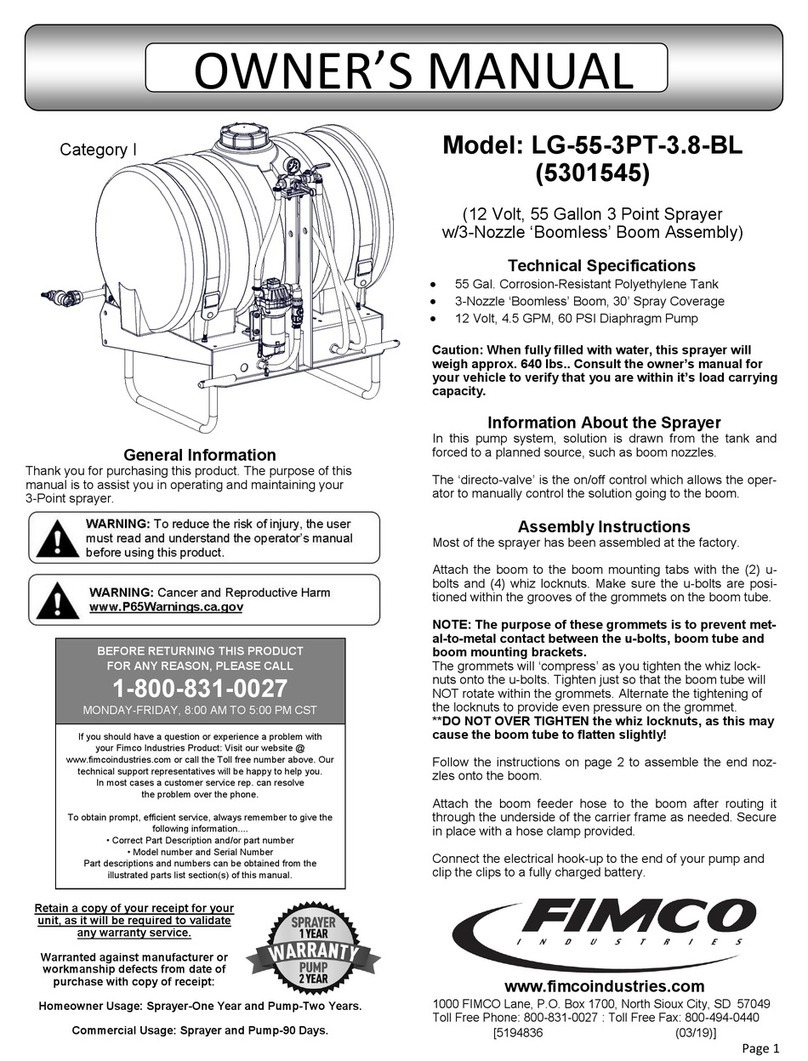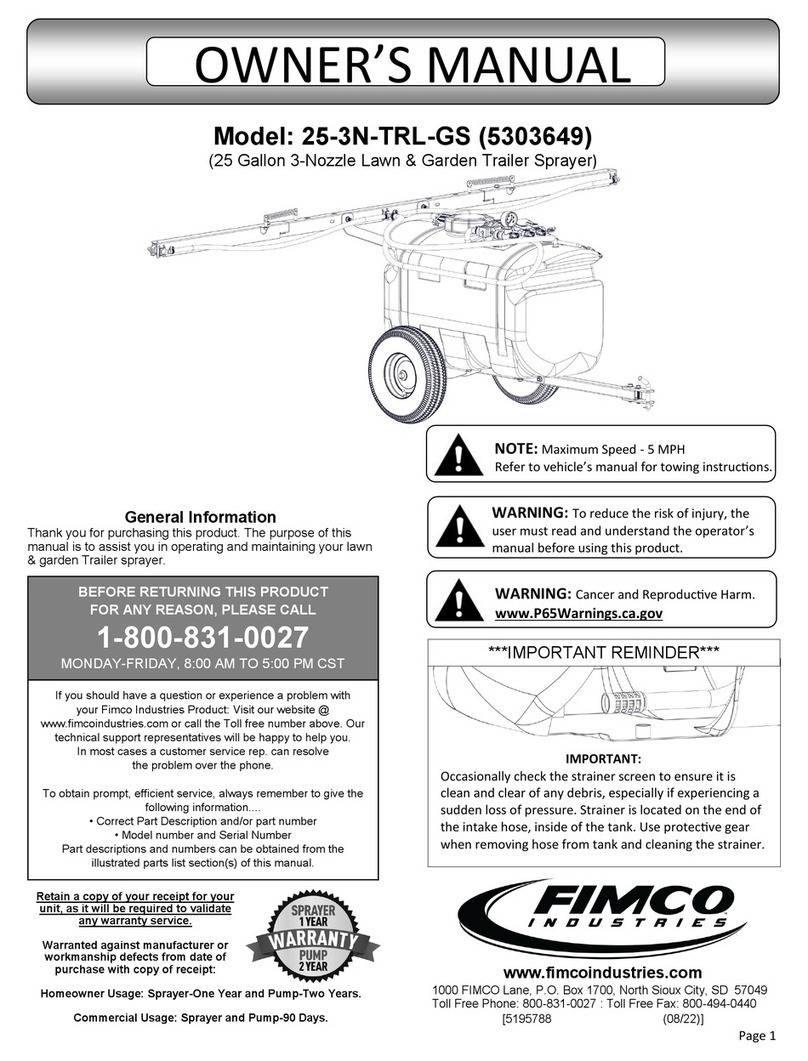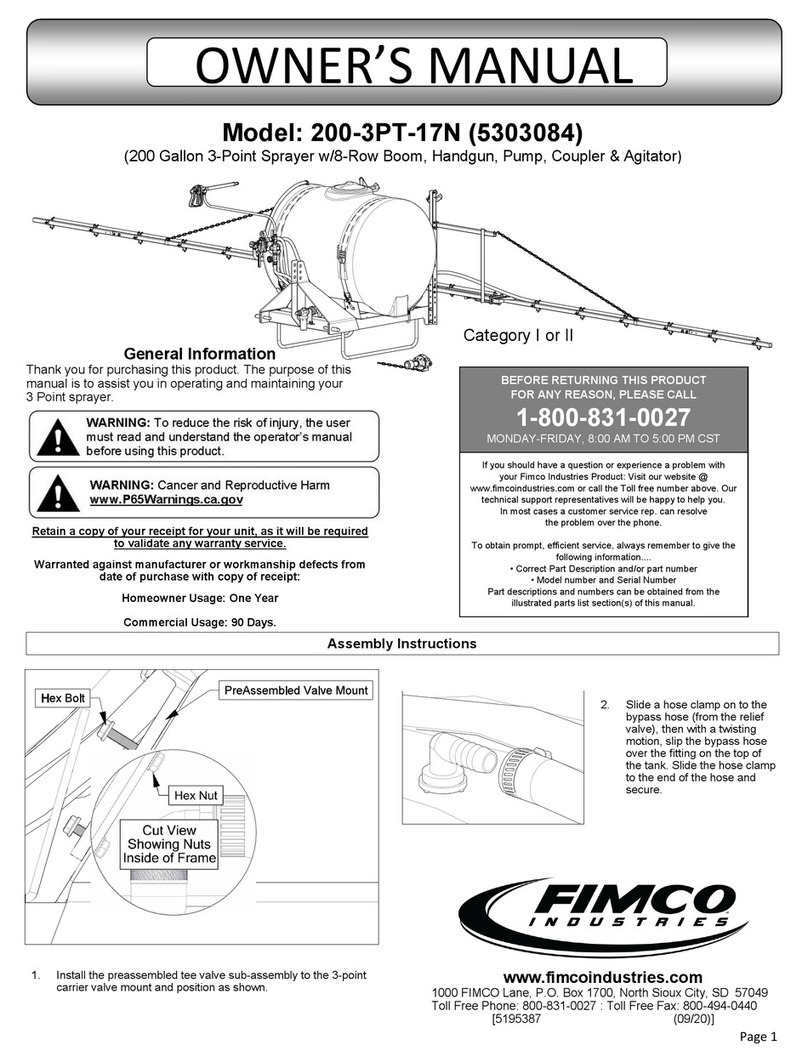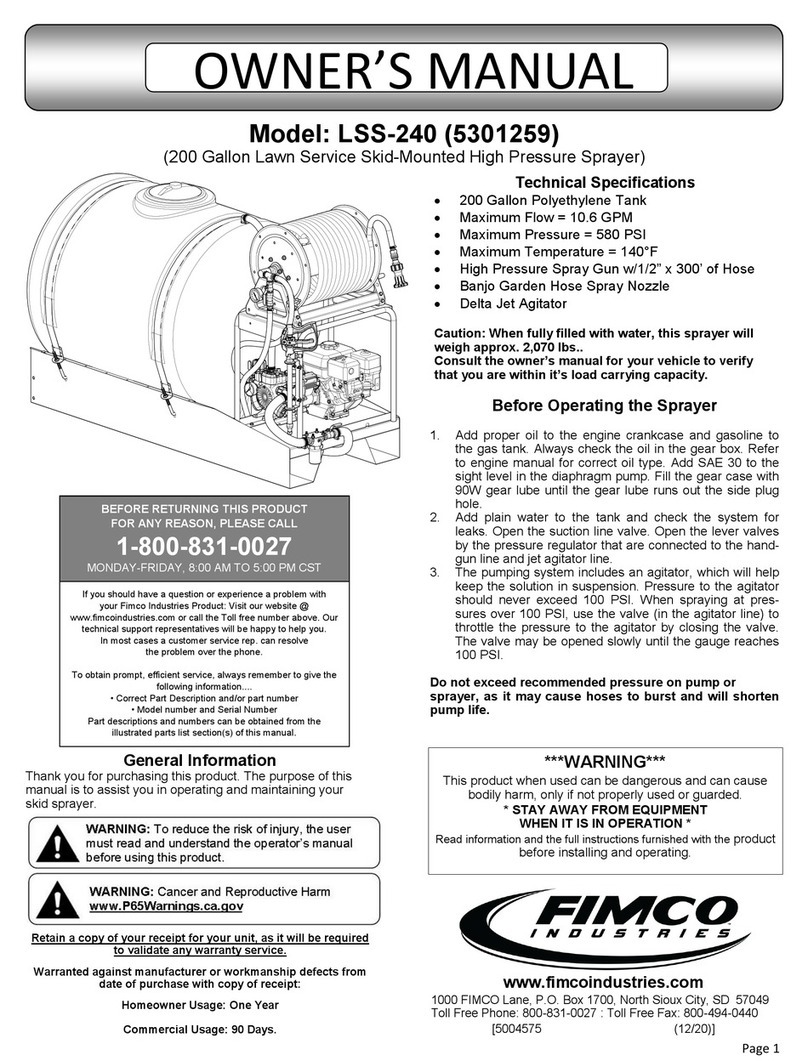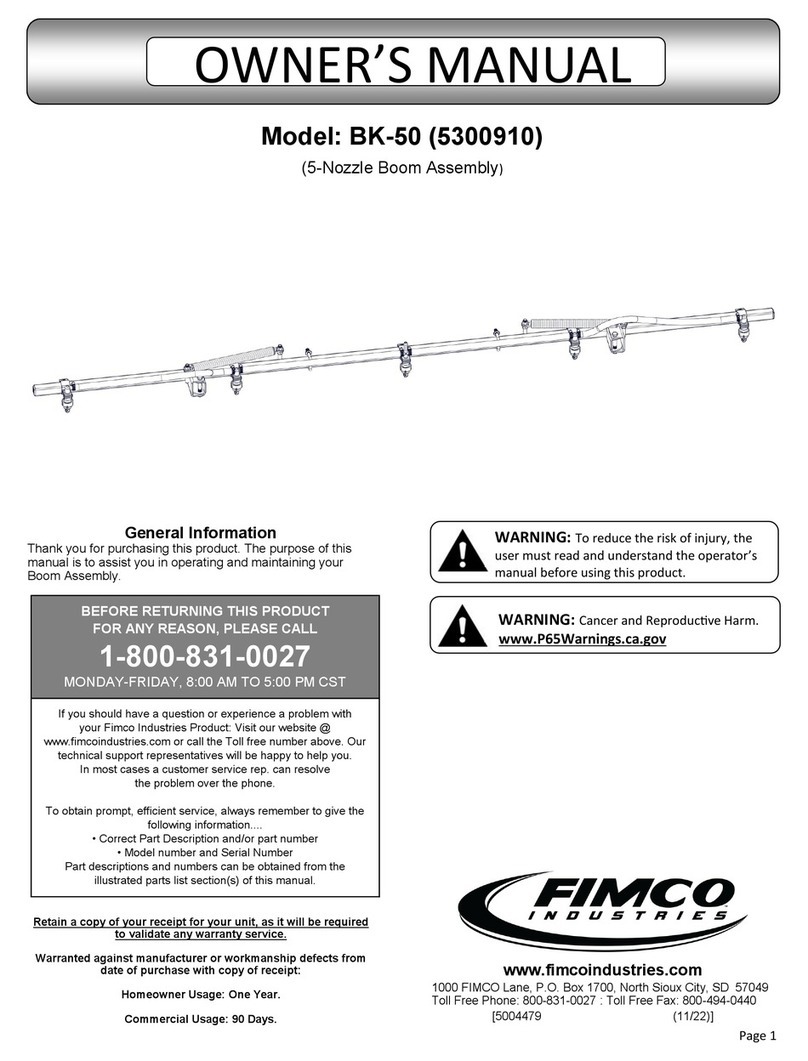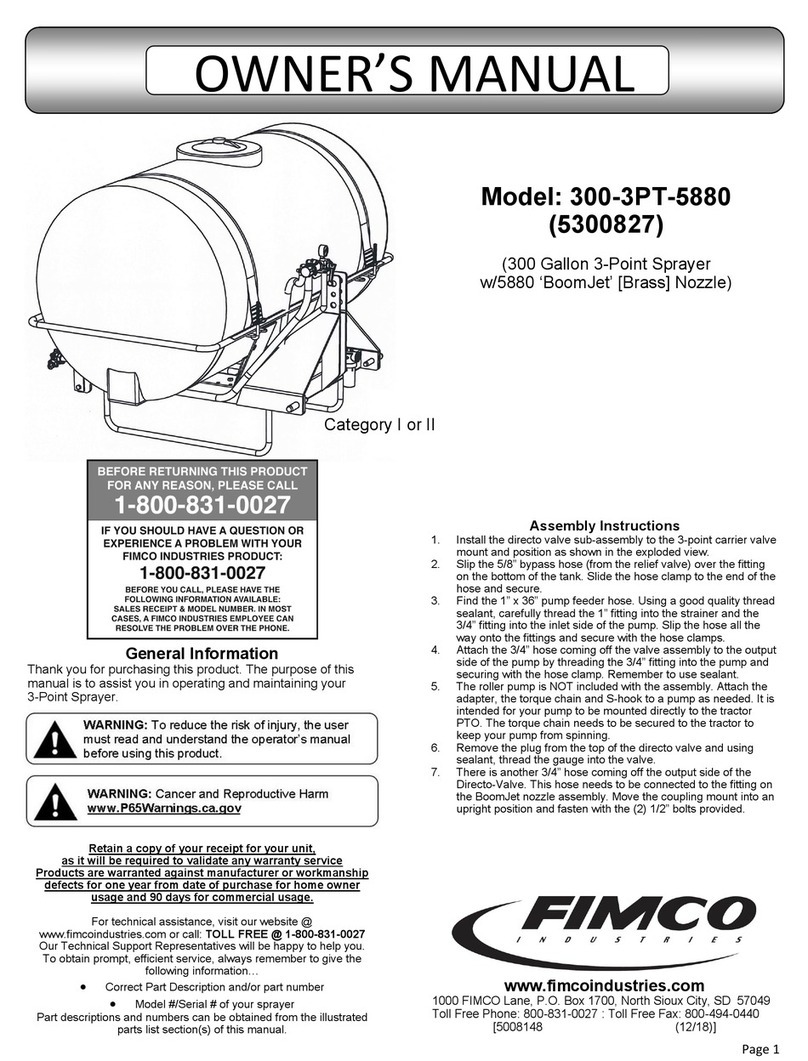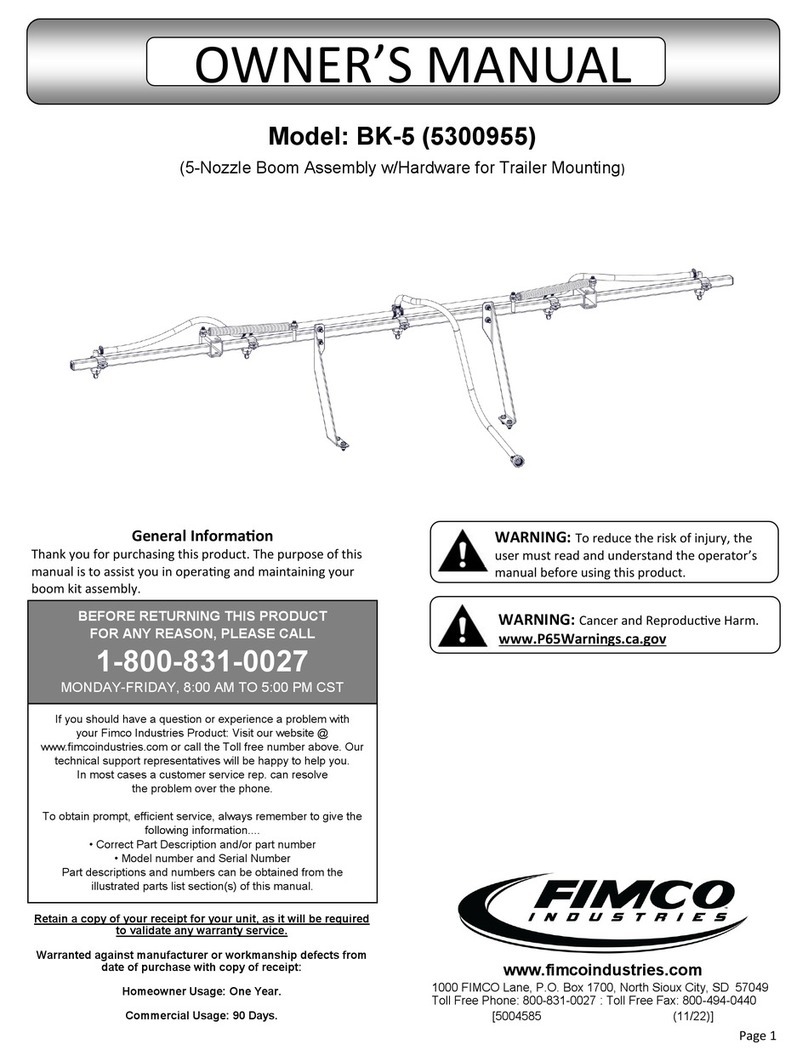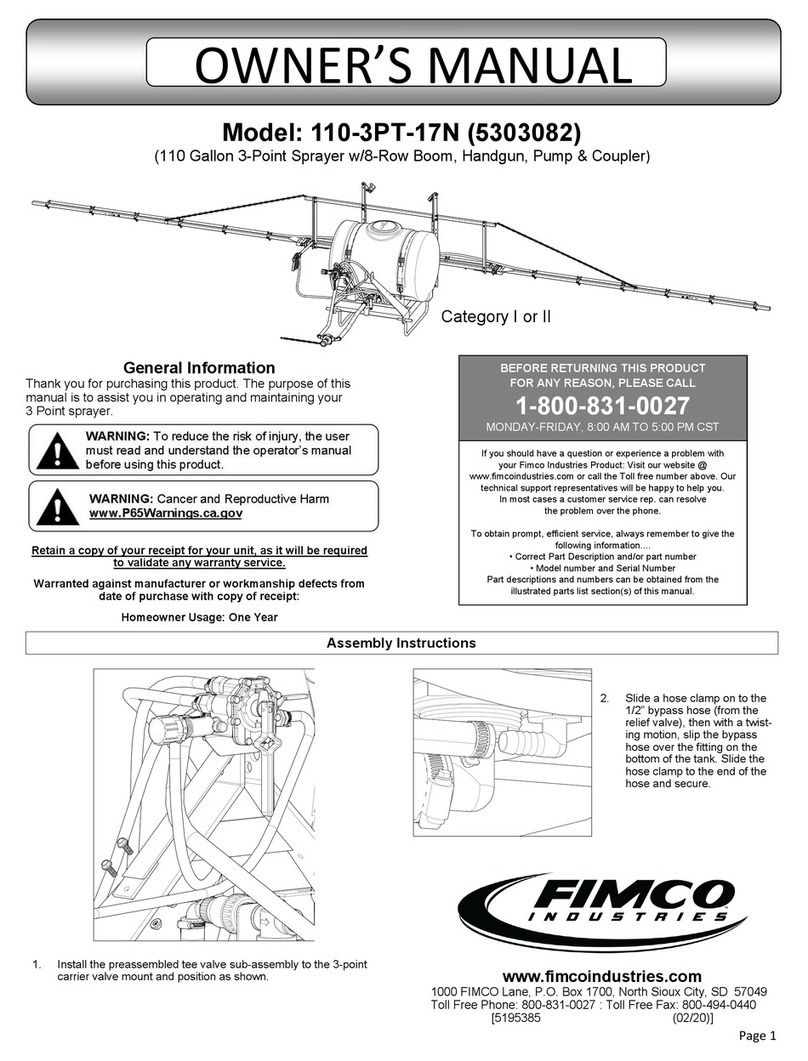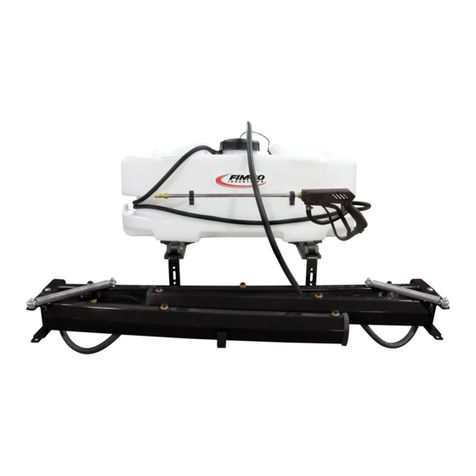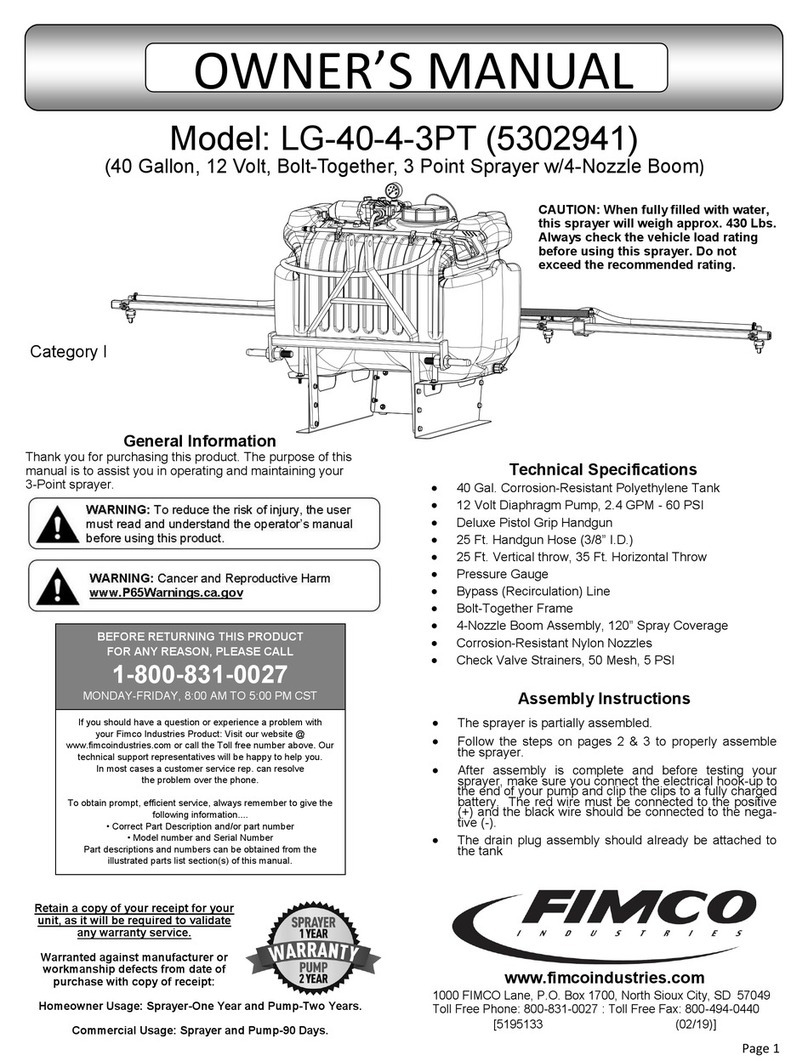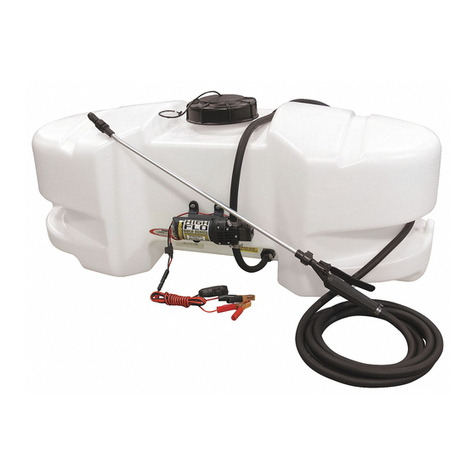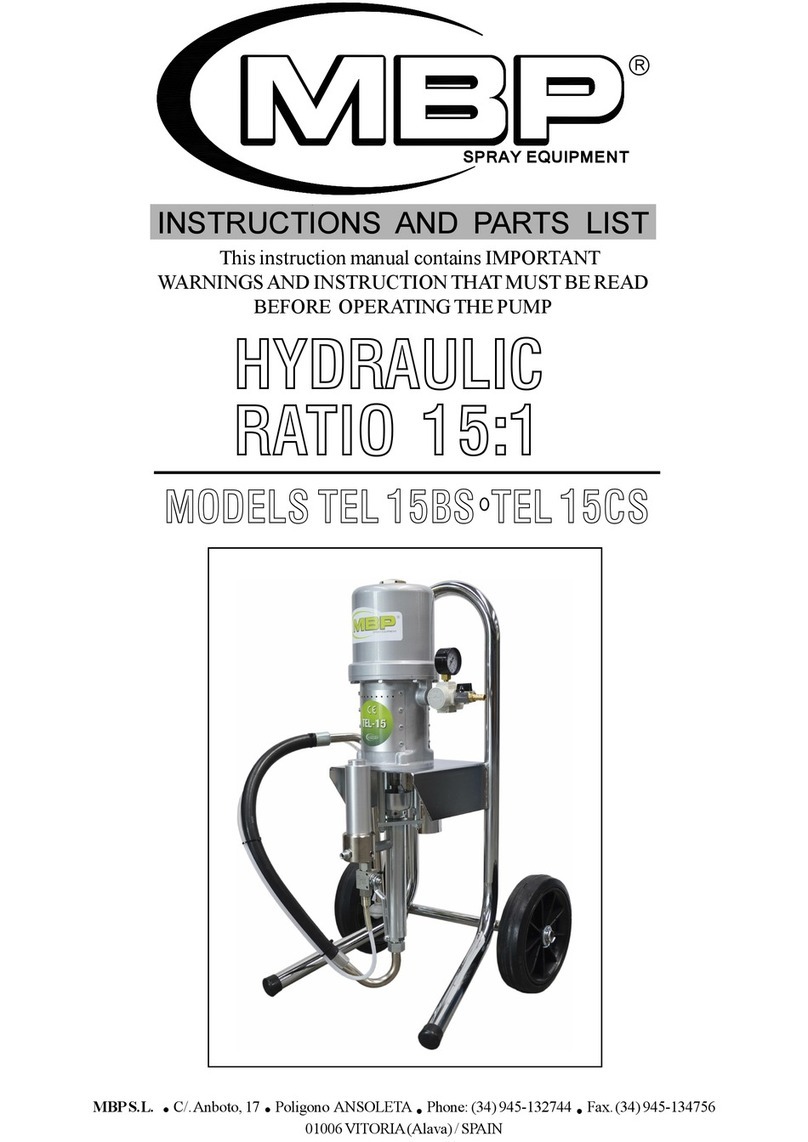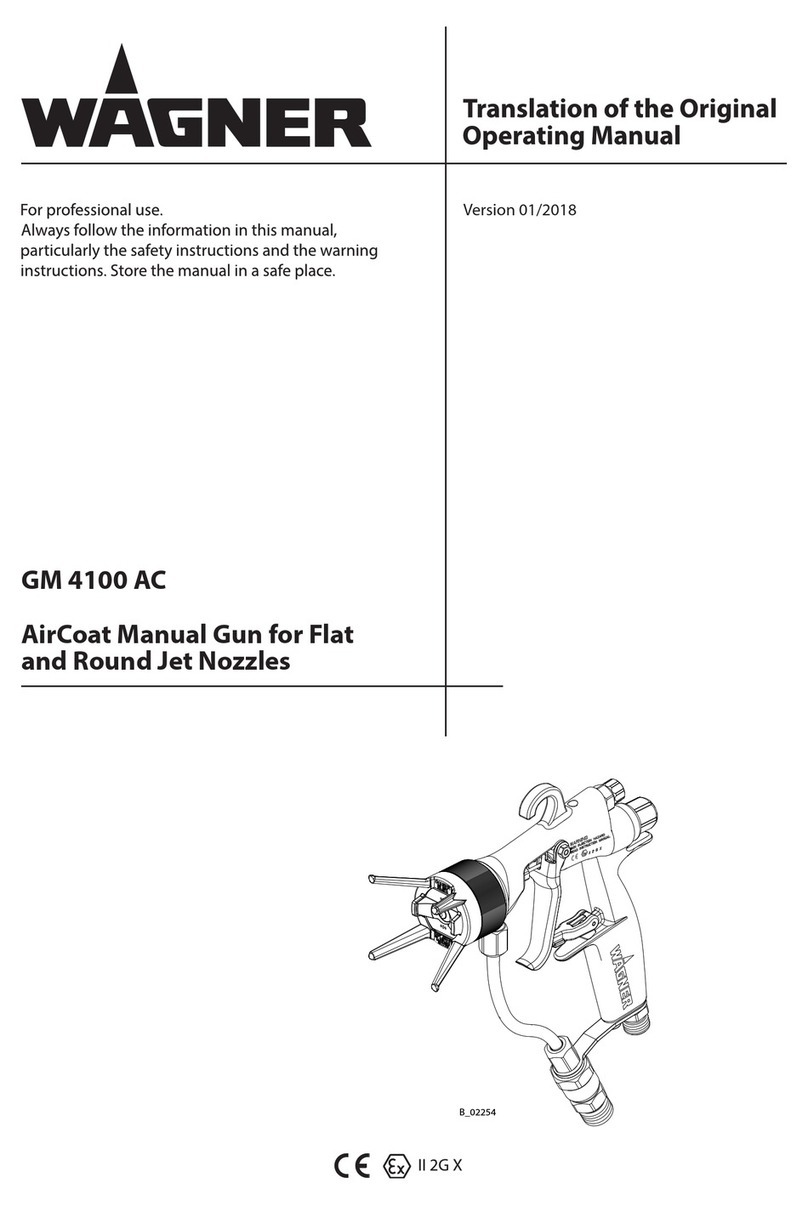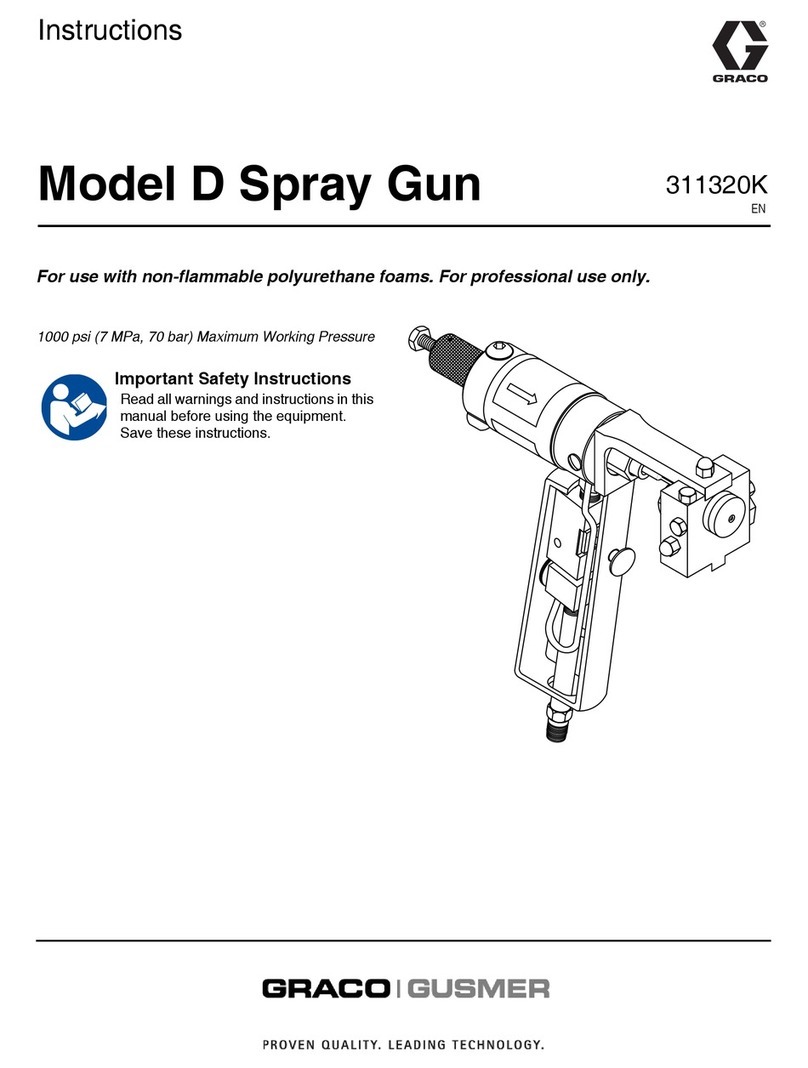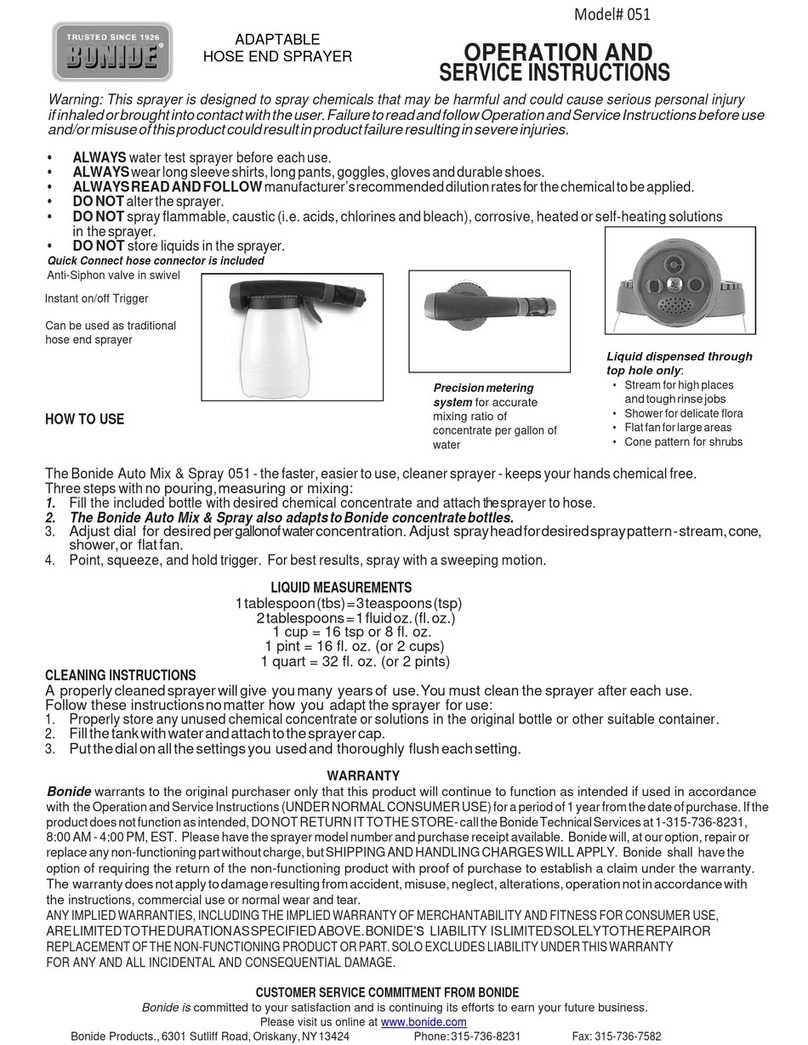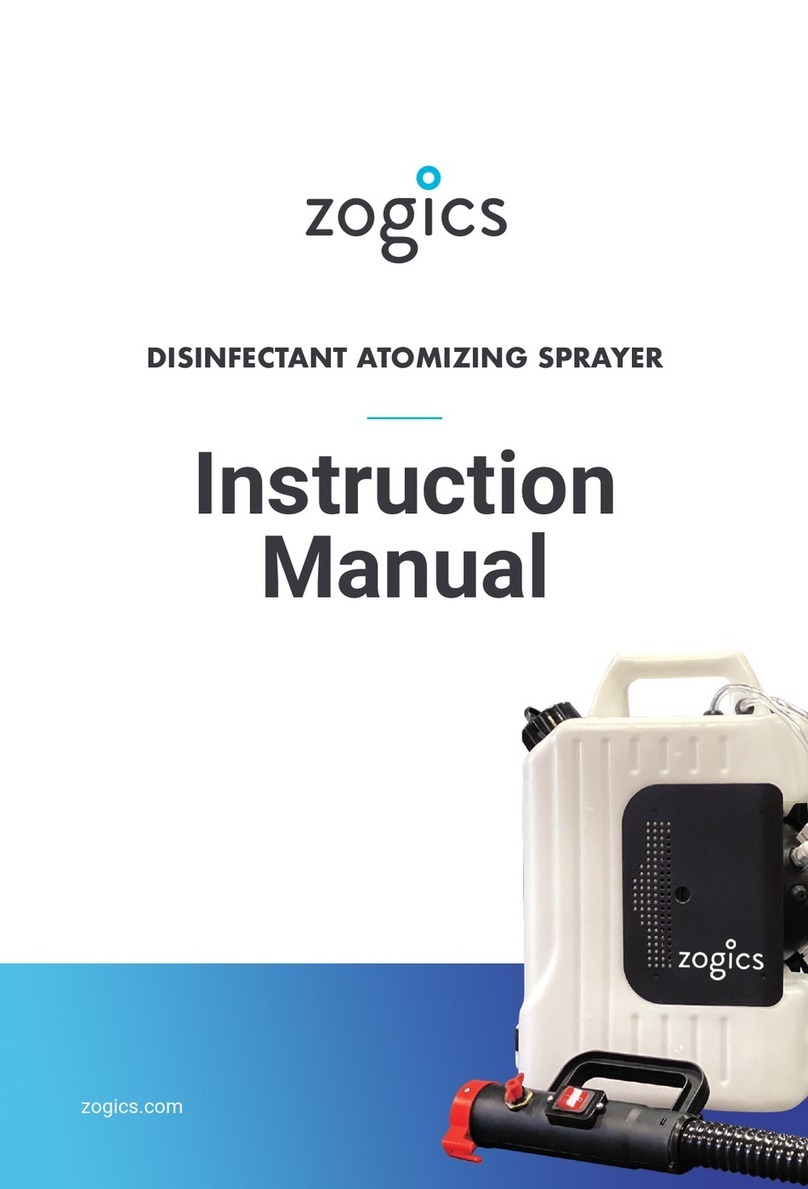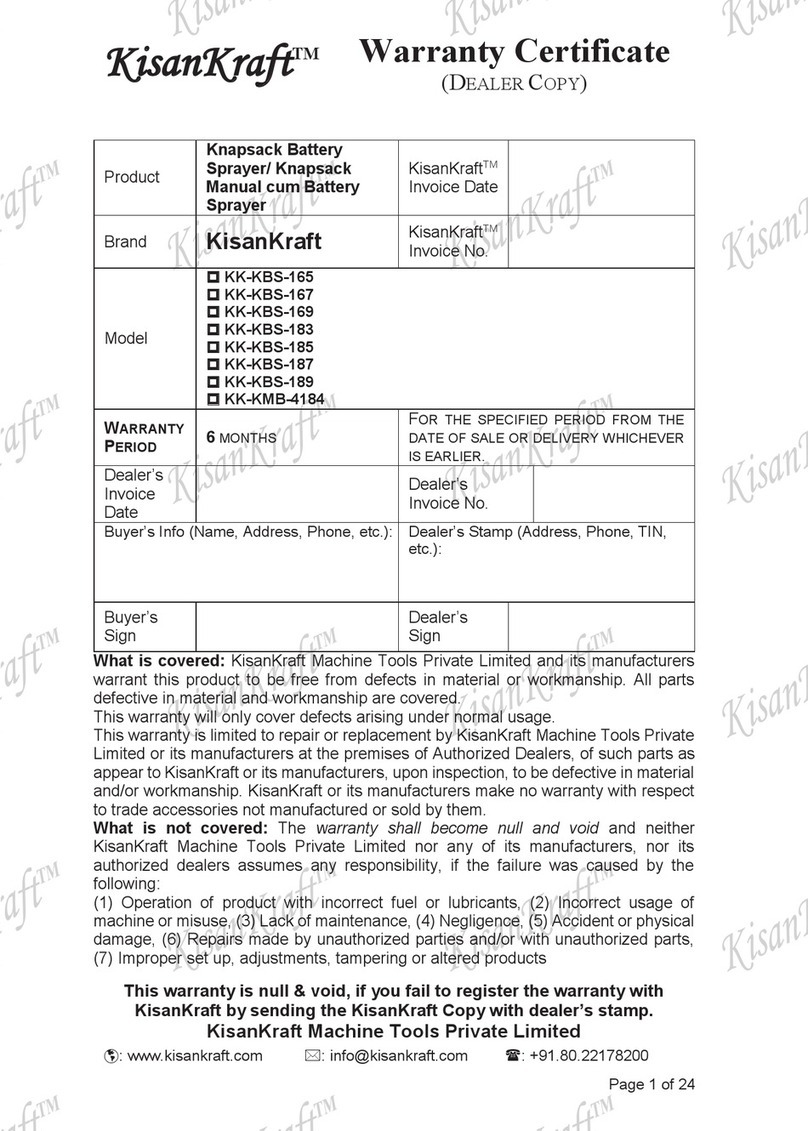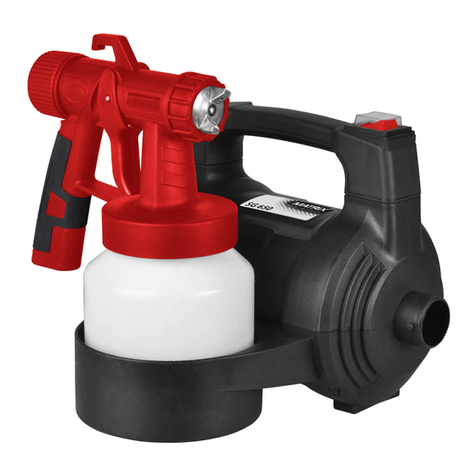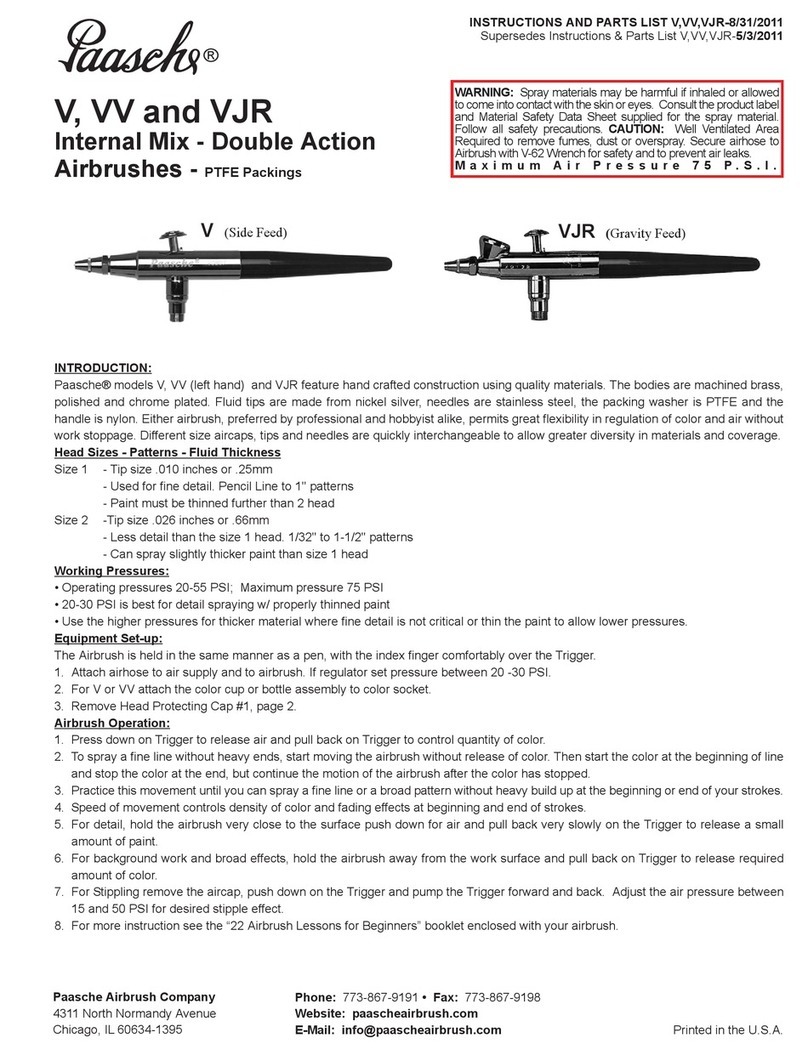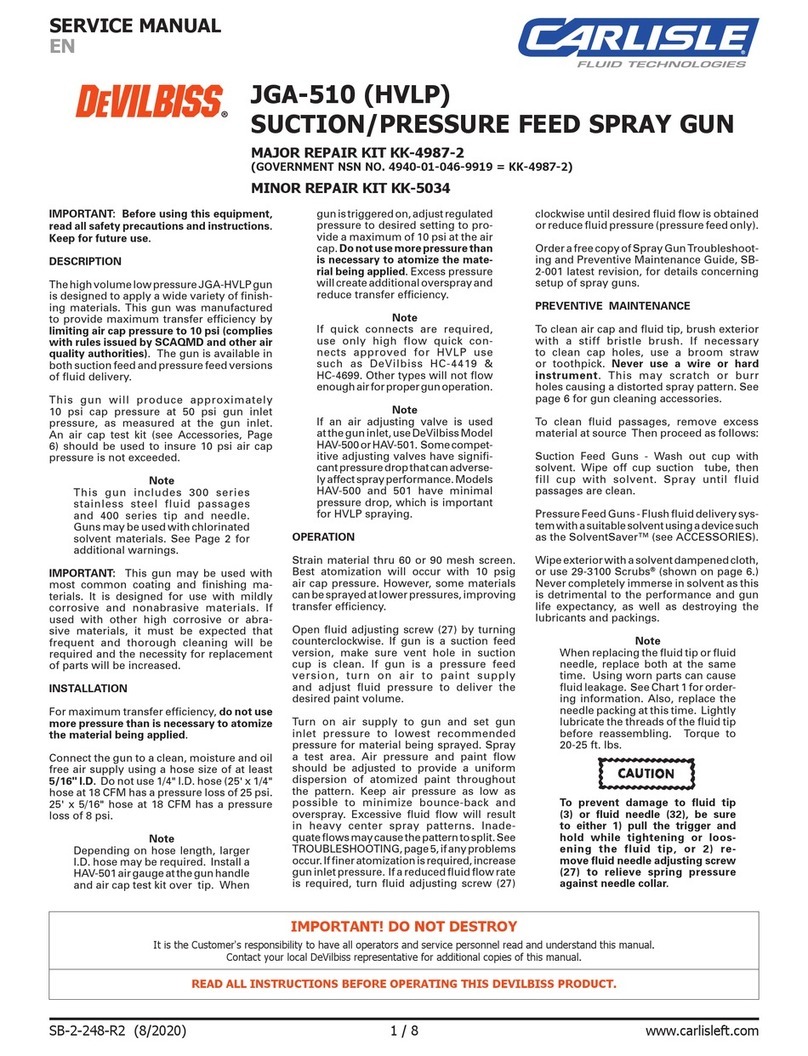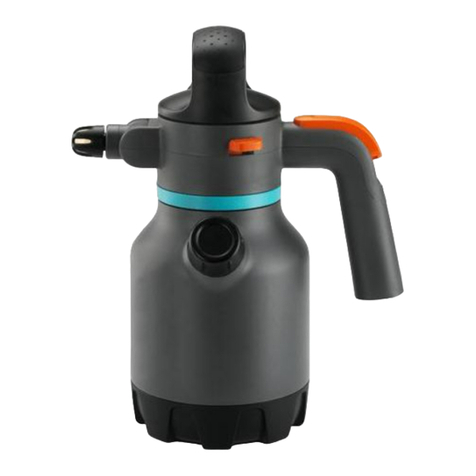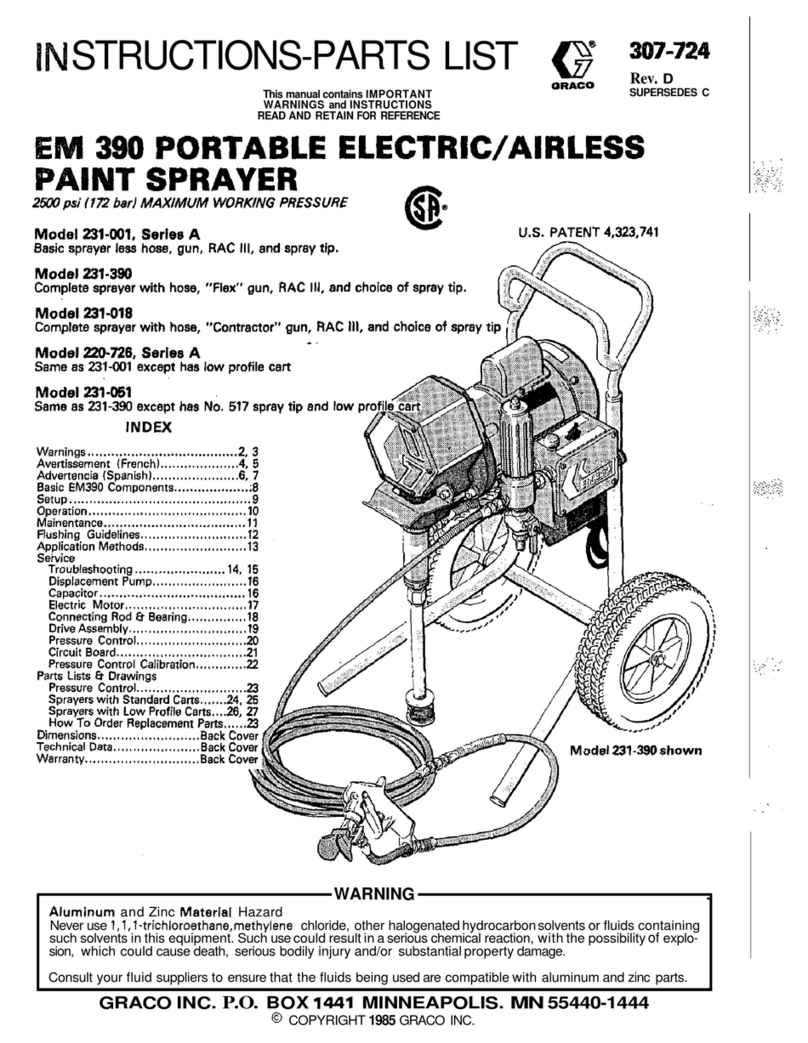Page 7
Calibraon
Chemical labels may show applicaon rates in gallons per acre, gallons per 1000 square feet or gallons per 100 square feet. You
will note that the p chart shows 2 of these rang systems. Once you know how much you are going to spray, then determine
(from the p chart) the spraying pressure (PSI), and the spraying speed (MPH).
Determining the proper speed of the pulling vehicle can be done by marking o 100, 200 & 300 feet. The speed chart indicates the
number of seconds it takes to travel the distances. Set the throle and with a running start, travel the distances. Adjust the
throle unl you travel the distances in the number of seconds indicated by the speed chart. Once you have reached the throle
seng needed, mark the throle locaon so you can stop and go again, returning to the same speed.
Add water and proper amount of chemical to the tank and drive to the starng place for spraying.
Using the Boom Nozzles
Four things must be considered before spraying with the
boom.
How much chemical must be mixed in the tank.
Rate of spray (gallons per acre to be sprayed).
What pressure (p.s.i.) will be used.
Speed traveled (mph) while spraying.
Refer to the chemical label to determine your chemical
mixture
See the p chart to determine the pressure to be used.
The chart will also show the speed used when spraying.
Start the pump and open the valve to the boom noz-
zles.
Check the spray paern. Usually you can see the cover-
age beer on a solid concrete surface, such as a drive-
way.
Maintenance During/Aer Spraying
Periodically check the strainer and clean the screen on your
intake line.
If sprayer becomes clogged during use, disconnue use immediately. DO NOT aempt to service while chemicals are in the sprayer
and power is connected. Proper care and maintenance will prolong the life of your sprayer.
Aer use, drain the tank and store or dispose of chemical properly. Never allow chemical to sit in the sprayer or pump for long
periods of me. Fill the sprayer half way with clean water. Start the pump and allow the water to pump through the enre plumb-
ing system and nozzles. Drain and then rell half full, add the recommended amount of a good quality tank cleaner, such as FIMCO
Tank Neutralizer and Cleaner. (If no tank cleaner is available, you may substute dish soap for this step, about 1-2 oz. per gallon).
But a neutralizer/cleaner should be used to thoroughly clean the system. Turn pump on and circulate through system for 15
minutes and then spray out through boom and handgun nozzles. Rell sprayer half way with clean water and repeat. Follow the
chemical manufacturer’s disposal instrucons of all wash or rinsing water.
If boom or handgun nozzles need cleaning, remove them from the sprayer and soak in warm soapy water. Clean with a so bris-
tled brush or toothpick if necessary. Never use a metal object. Even the slightest damage can change the ow rate and spray distri-
buon. Water rinse and dry the ps before storing.
WARNING: Some chemicals will damage the pump valves if allowed to soak untreated for a length of me! ALWAYS ush the
pump as instructed aer each use. DO NOT allow chemicals to sit in the pump for extended mes of idleness. Follow the chemical
manufacturer’s instrucons on disposal of all waste water from the sprayer.
Winter Storage
Prepare the sprayer for end-of-season storage by running RV anfreeze through the system. This will keep internal parts lubricat-
ed, protect against corrosion and keep the unit from freezing. Note: RV anfreeze is non-toxic and biodegradable and generally
safer for the environment than automove anfreeze.
Before storing your sprayer for winter or long term storage, thoroughly clean and drain it as much as possible. Then pour enough
pink RV anfreeze into the tank so that when the pump is turned on you can pump the anfreeze throughout the enre plumbing
system, including the bypass. Make sure to operate the boom and handgun unl you see pink uid spraying from the nozzles.
Leave any remaining anfreeze in the tank. Before your next usage, rinse the anfreeze from the sprayer with clean water.
It is nearly impossible to drain all of the water from the sprayer and any trapped water can freeze in cold weather and damage
parts of the sprayer. Pumping the anfreeze through the system will displace the water and help prevent this damage.
Removing from storage: drain the anfreeze. Fill the tank with fresh water and run through the system. Dispose of
anfreeze and ush water properly.
